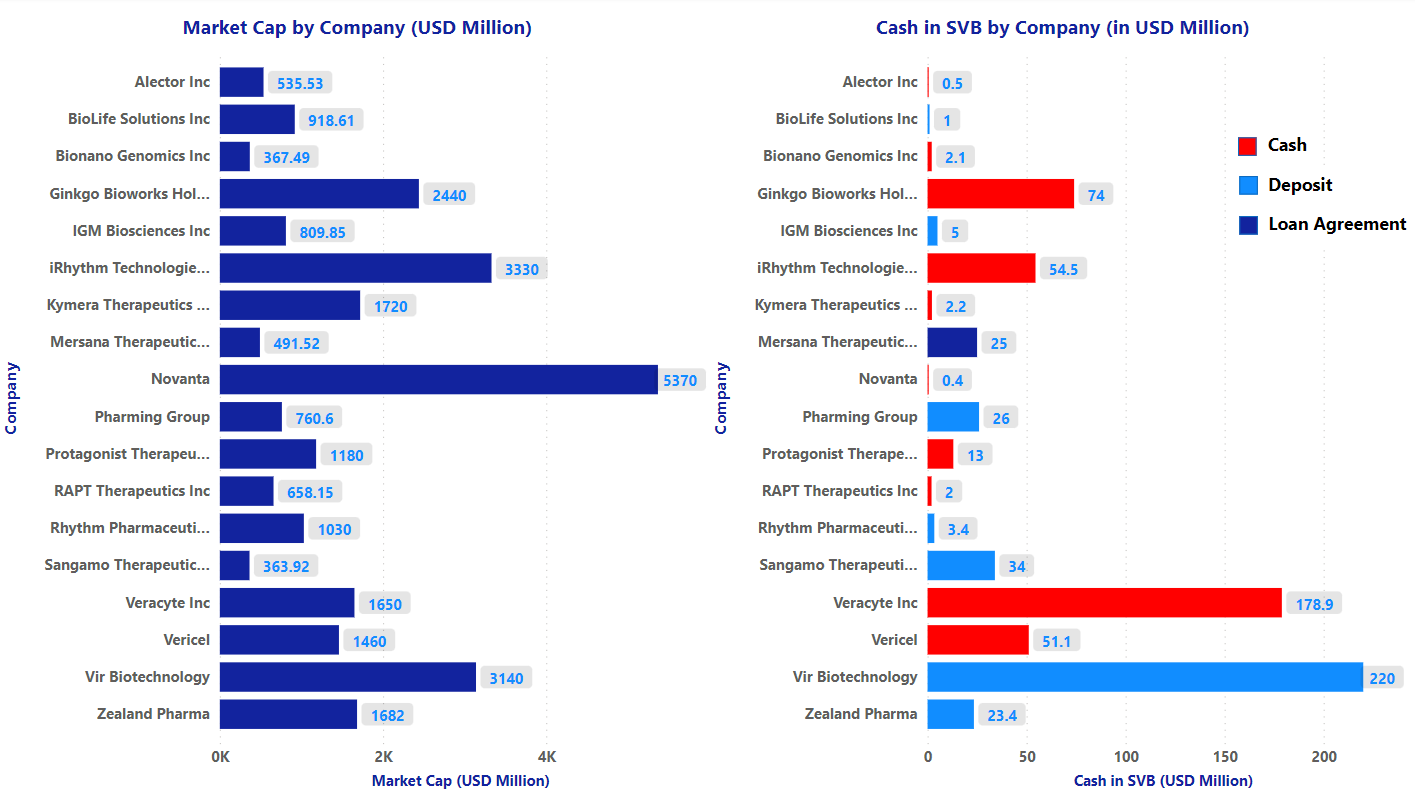
Silicon Valley Bank Collapse: Implications on Life Science Industry
Shots:
-
An ideal resort for tech-based startups, life science companies, and venture capital firms, Silicon Valley bank was the 16th largest bank in the United States. On March 17th, 2023, the bank’s former parent company, SVB’s Financial Group, filed for Chapter 11 bankruptcy
-
Over the years, Silicon Valley Bank has supported numerous young businesses and catered to the special needs of startups. Silicon Valley Bank brought in minority groups and founders who lacked social security numbers
-
In the wake of the Silicon Valley Bank collapse, PharmaShots brings an insightful analysis of the dependence of life science startup companies on banks. To access the full report, reach out to us at connect@pharmashots.com with the Subject line “SVB Bank Collapse 2023”
A nightmare for customers, a lesson for banking institutions, and most importantly a new awakening for startups, the collapse of Silicon Valley Bank & few other banks evoked mixed emotions among different groups. On March 10th, 2023, the Federal Reserve and the FDIC seized the assets of the Silicon Valley bank headquartered in Santa Clara, California. With its operations running in around 11 countries, Silicon Valley bank was an ideal banking option for tech-based startups, life science companies, and venture capital firms, as the bank catered to the tailored needs of startups like loans, deposits, and investment management. Moreover, it quickly became a go-to bank for young businesses as its services were open to founders who did not have social security numbers. In case you are wondering, what led to this sudden dissolution of the 16th largest bank in the US and what the future holds for life science companies across the globe, then this just might be a perfect post for you.
The bank, which earlier invested in short-term marketable securities pinned its hopes on long-term treasury bonds, which are one of the safest modes of investment. The amateurish decision was exacerbated in 2022, when the Federal Reserve raised the interest rates in response to soaring inflation, leading to a sudden tumble in the values of treasury bonds. To overcome the cash crunch, the bank sold $21B worth of securities and announced an emergency sale of some of its treasury stocks to raise $2.25B. The upshot of the steps spooked investors and customers, resulting in a withdrawal of $42B the following day. Even though 89 percent of the bank’s $172B deposit was uninsured, the FDIC received exceptional authority from the treasury to provide full compensation to all the depositors. On March 17th, 2023, SVB’s former parent company, SVB Financial Group, filed for Chapter 11 bankruptcy.
Now when we have spoken about what happened and how it happened. Let's talk about how this is going to impact Pharma/ Life Science industry, PharmaShots viewpoint. When it comes to life science companies and the healthcare industry, there is always a perennial requirement of hefty investment, particularly if it is a startup. PLS companies often rely on banks and financial institutions to provide financing for their R&D activities, as well as for acquisitions, licensing agreements, and other strategic initiatives. If a major lender like SVB collapses, it could disrupt the flow of capital to these companies and potentially lead to a tightening of credit markets.
In addition, SVB has a significant presence in the life sciences industry and is known for its expertise in providing financing and other services to biotech and pharmaceutical companies. Hence, SVB collapse, could create a difficult to fill void in the market

Based on our analysis, we have found that out of 36 companies that have disclosed their relationship with SVB bank, Veracyte and Ginkgo have the highest cash reserves, followed by iRhythm Technologies and Vericel. In contrast, Vir Biotech has the highest amount of cash and cash equivalent deposits at around $220 million USD.
Although we acknowledge that the US government is working towards resolving this issue, it may take some time for these companies to receive the necessary funds from other sources. In the meantime, they may need to explore alternative funding options to sustain their operations.
Tags

Saurabh is a Senior Content Writer at PharmaShots. He is a voracious reader and follows the recent trends and innovations of life science companies diligently. His work at PharmaShots involves writing articles, editing content, and proofreading drafts. He has a knack for writing content that covers the Biotech, MedTech, Pharmaceutical, and Healthcare sectors.














